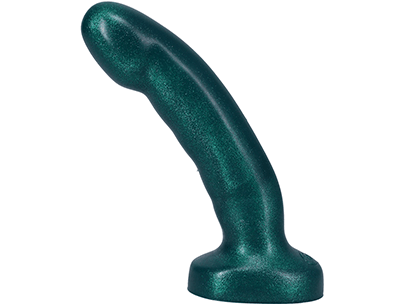Condoms are awesome. What other prophylactic keeps you safe, doesn’t involve hormones, and can even enhance your pleasure?
It’s true that condoms get a bad rap. A lot of people say that they reduce sensation. To them, we say: Try again. Perhaps your run-of-the-mill condom from the bowl at the free clinic may not be all that exciting, but there are so many options for colors, sizes, textures and even innovative new shapes of condoms that there’s no reason a carefully selected condom shouldn’t feel just as good. In fact, if you find the right condom, it may even feel better.
Unless the packaging specifies that the condoms are designed for people with vaginas, condoms typically are worn on the penis. “Female” condoms are gradually becoming more popular, but there’s still less variety as far as textures and materials. They’re also just slightly less effective than male condoms, so many folks are still opting for the good old-fashioned kind.
What materials do condoms come in?
This is for the traditional user. Lambskin is becoming harder to find these days, as it seems to be going out of fashion due to its lack of efficacy. Made of membrane from a lamb’s intestine, the lambskin condom does feel somewhat more “natural,” but unfortunately, it doesn’t protect against STIs since the pores in the material are small enough to block sperm transmission but not small enough to block viruses. They’re 98% effective against pregnancy with proper use or 85% effective with improper use (more on what’s proper and improper below.) They’re a great choice for monogamous couples and those allergic to latex. They’re also environmentally friendly and biodegradable, but usually a bit more expensive than latex and increasingly difficult to find. Lambskin condoms can be used with any type of lubricant, unlike other types of rubber, which can break down if any type of oil-based lube is introduced.
The most common type of readily available condoms, latex condoms have been the most trusted form of barrier contraception since their invention in the 1920s (although other types of rubber condoms were available in the 1800s, and natural membrane condoms were used for centuries before that.) Latex has exceptional tensile strength and elasticity, which is why they’re less likely to break than their plastic counterparts. Their strength, stretchiness and affordability make them the go-to trustworthy option. There are a few downsides: Some individuals are allergic to latex, which can produce quite unfortunate results if the allergy is discovered while the condom is in use, and oil-based lubricants can cause the latex to break down. Breakage can also occur, although it’s less likely than with plastic condoms, and latex condoms may feel “thicker.” That said, there are all types of “sensation” condoms available that can increase any sensitivity lost with the use of latex.
- Polyisoprene and Polyurethane
These are great options for folks with latex allergies. Polyisoprene and polyurethane are essentially types of plastic—but don’t be fooled. They’re actually much thinner than traditional latex condoms. Sounds great, right? If you’re having trouble with latex condoms and are looking for an alternative that feels like nothing’s between you and your partner, they’re a perfect option, but they do have some limitations. While perfect use of plastic condoms is the same as other types of condoms for preventing pregnancy and STI transmission, they are more prone to breakage because they are so thin and stretchy—two-and-a-half times more likely, in fact. If you’re using these condoms, be sure to use
water-based or
silicone lube to minimize friction and decrease the likelihood of breakage. Do not use an oil-based lube with these condoms, as it can cause the thin plastic to break down.
What are some special types of condoms?
Lots of condoms are made with the addition of special textures, lubricants and even fancy designs that can increase sensitivity and augment sensation. They’re no longer simply “ribbed for her pleasure.” Now all sorts of variations are created with both partners’ enjoyment in mind.
Condoms with the addition of warming or cooling lubricant on the inside and out add a sensation both partners will benefit from. Fire and Ice offers both tingling and heated stimulation in one.
With its revolutionary “unfolding” pattern, the Hex is a highly mathematical design made up of 350 interconnected hexagons, based on an atomic arrangement, resulting in the thinnest and strongest structure known to man. Aside from being ultra-thin, the Hex is textured on the inside so that the penis-owner enjoys a bit of extra friction.
Another revolutionary design intended to increase friction and reach the g-spot. The G’s unique shape means that the condom moves with your body and has ribs on the exact part of the condom where, when worn, the shaft will meet her deepest hot spot.
These condoms are coated on the inside with a small amount of a desensitizing agent, like benzocaine or lidocaine, to decrease sensitivity, allowing you to ensure that your lovemaking session is a marathon, not a sprint.
These hyper-thin customer favorites go way beyond simply “ribbed for her pleasure.” They’re also lined with “sensi-dots,” hundreds of tiny raised bumps to heighten sensitivity and maximize friction (the good kind of friction, that is!).
Why should I use a condom?
Condoms are 98% effective in preventing pregnancy with perfect use—although no one’s perfect, so with all our humanity, a better average would look more like 85%. They’re also 98% effective in preventing the transmission of sexually transmitted infections.
While other forms of contraception have their benefits, no other contraception covers all the potential risks like condoms do. For example, intrauterine devices have a 99% efficacy rate of preventing pregnancy but offer no protection against STIs. Oral contraception methods may work perfectly for many users, but these offer no protection against STIs and have unpleasant side effects like mood swings and depression. Of course, what’s best for you personally may vary based on your physiology and your behavior. Talk to your physician if you’re interested in learning more about alternative modes of contraception. But if you’re a person about town and need to find protection in a pinch, a condom is always the best choice to protect you against all of the risk factors having sex may incur.
Best practices for condoms
When the instructions that come with your box of condoms tell you that proper use is 98% effective in preventing STIs and pregnancy, that means two things: using a condom every single time you have sex and using the condom as described in the instructions. Other tips for enhancing the safety, efficacy and enjoyment of condoms include:
Be honest with yourself—it’s for your health. If you’re on the average size wearing a Double XL condom, or if you’re highly endowed wearing a regular condom, this can increase the likelihood that the condom will break, slip off, or snap.
- Use water-based or silicone lube
Although many condoms come lubricated, it usually isn’t the highest quality lube and doesn’t last long. Add your own to decrease the likelihood of breakage and increase pleasure. Another pro-tip: Add a drop of lube to the inside of the condom before putting it on to add a little extra fun for the wearer.
Don’t open the package with your teeth. You could accidentally tear the condom. Don’t store condoms in your wallet or your car, as heat damages latex, and bending the condom by sitting on your wallet can cause tears.
Using more than one condom may seem safer in theory, but it’s actually much less safe. The latex rubbing against latex can cause friction, which may cause breakage. It’s also uncomfortable, which may result in imperfect use.
A few other dos and don’ts:
- Don’t use condoms nearing their expiration date.
- Do inspect the condom after putting it on to make sure there are no tears or defects.
- Do put it on before any penetration.
- Do dispose of the condom immediately after sex.
- Don’t re-use condoms.
With such an abundance of types of condoms, you’re bound to find the best fit for you. Try a few varieties out and see which you like. You’re guaranteed to enjoy this experiment!



















